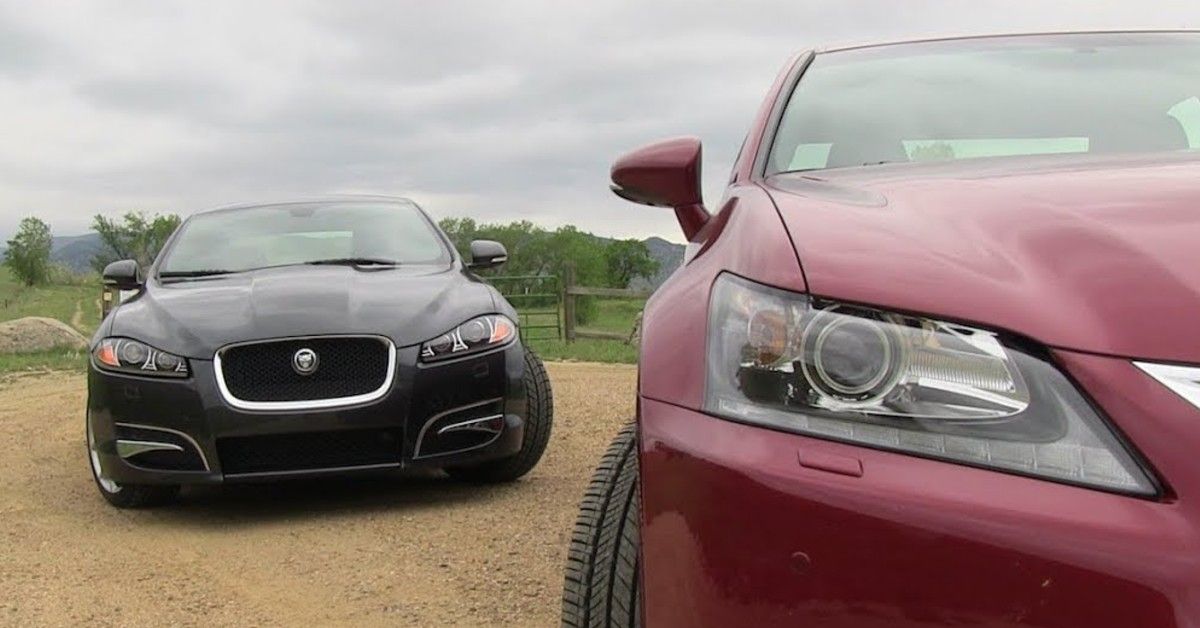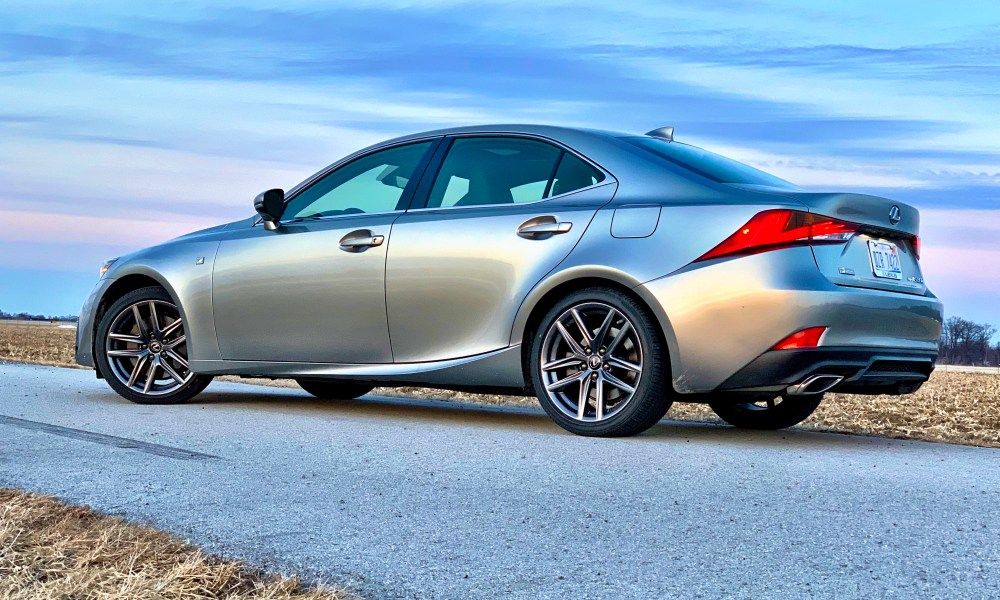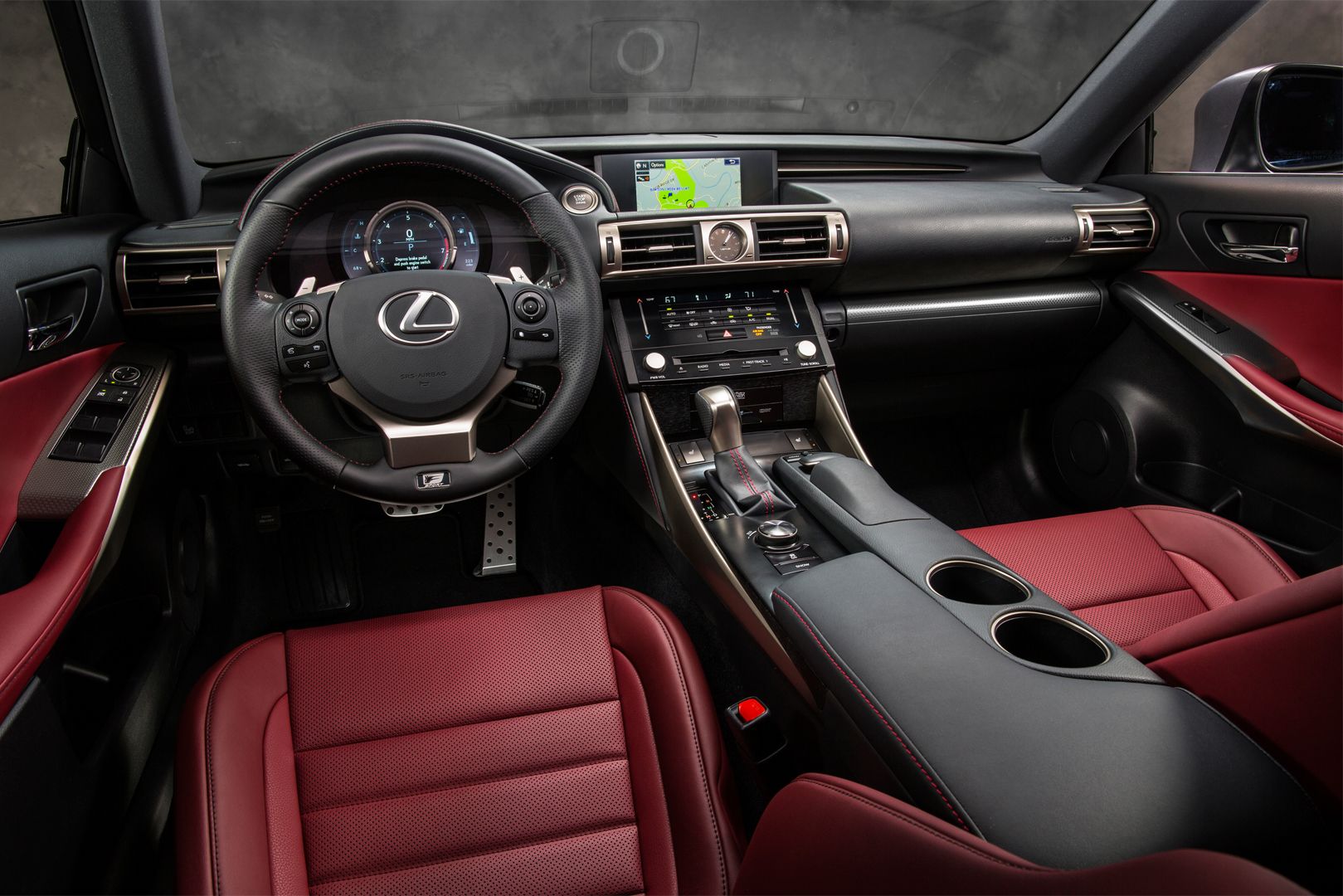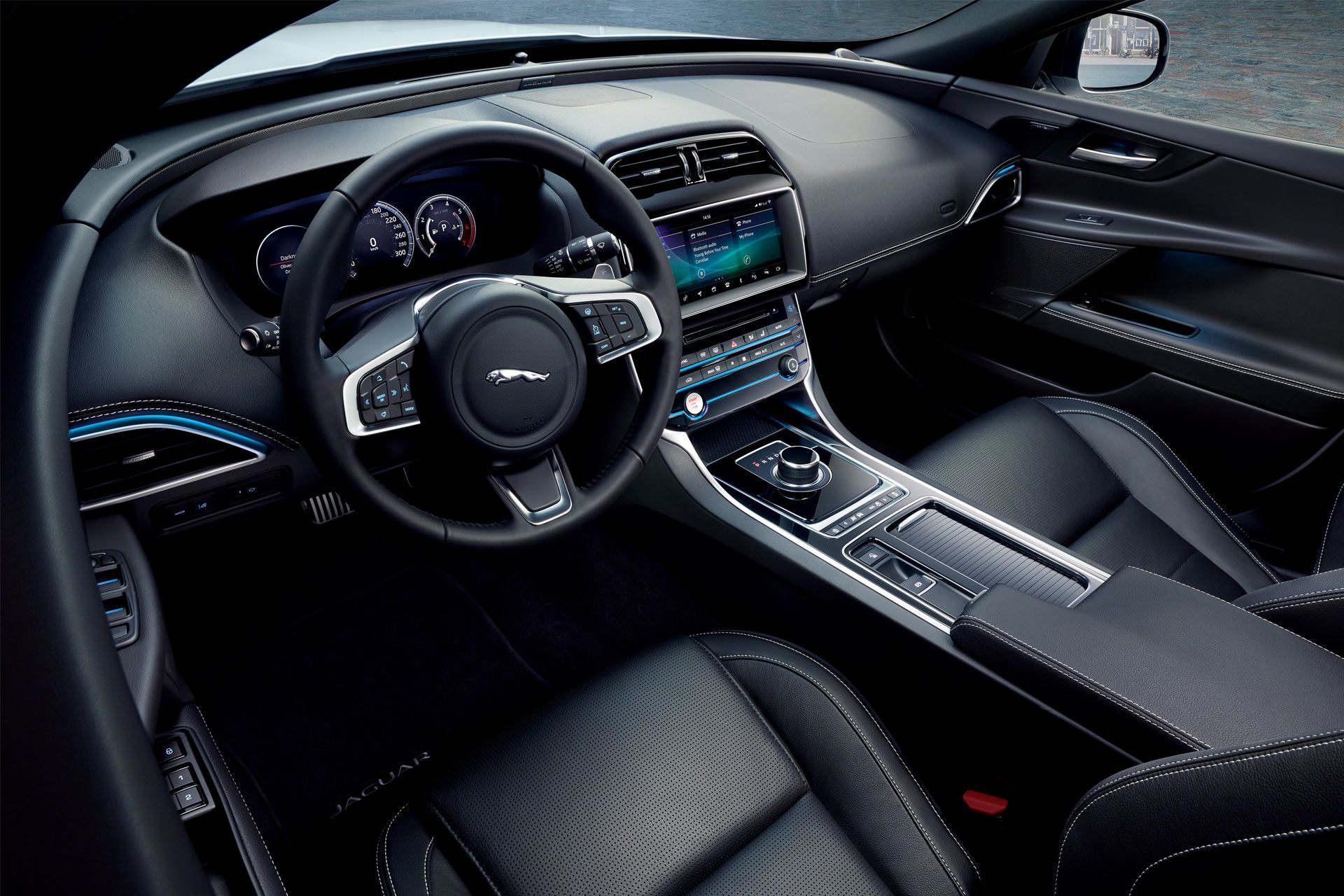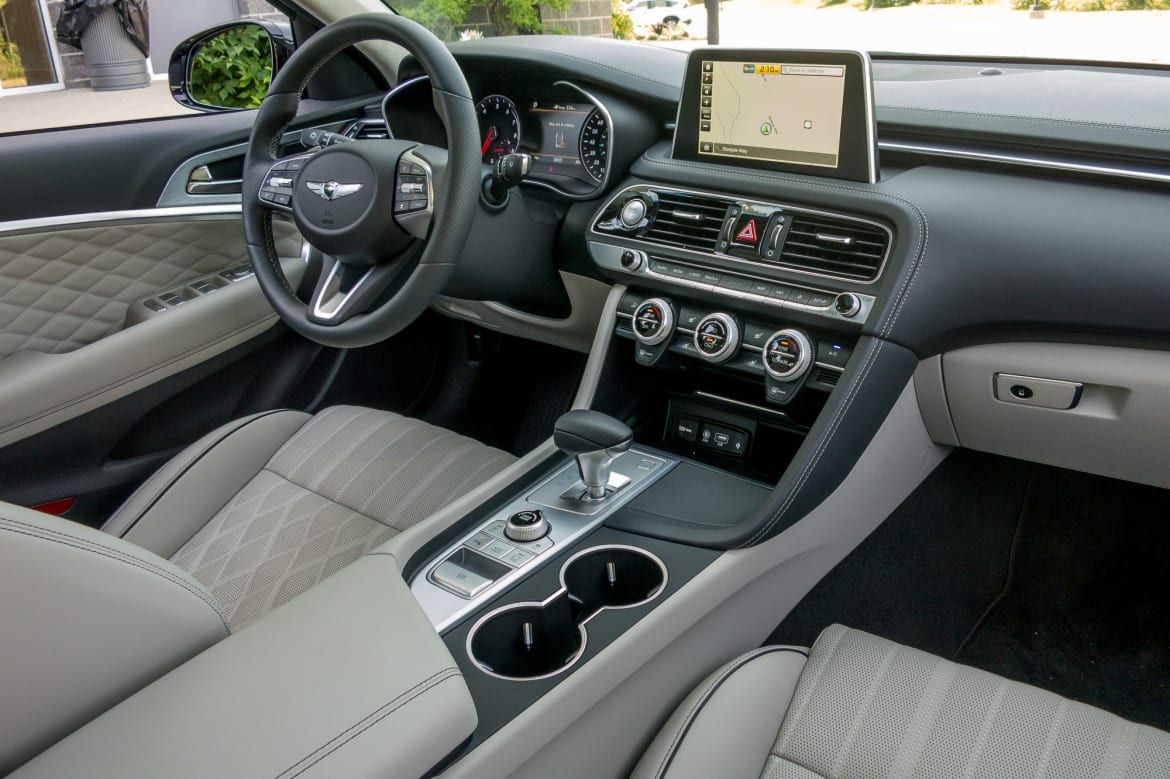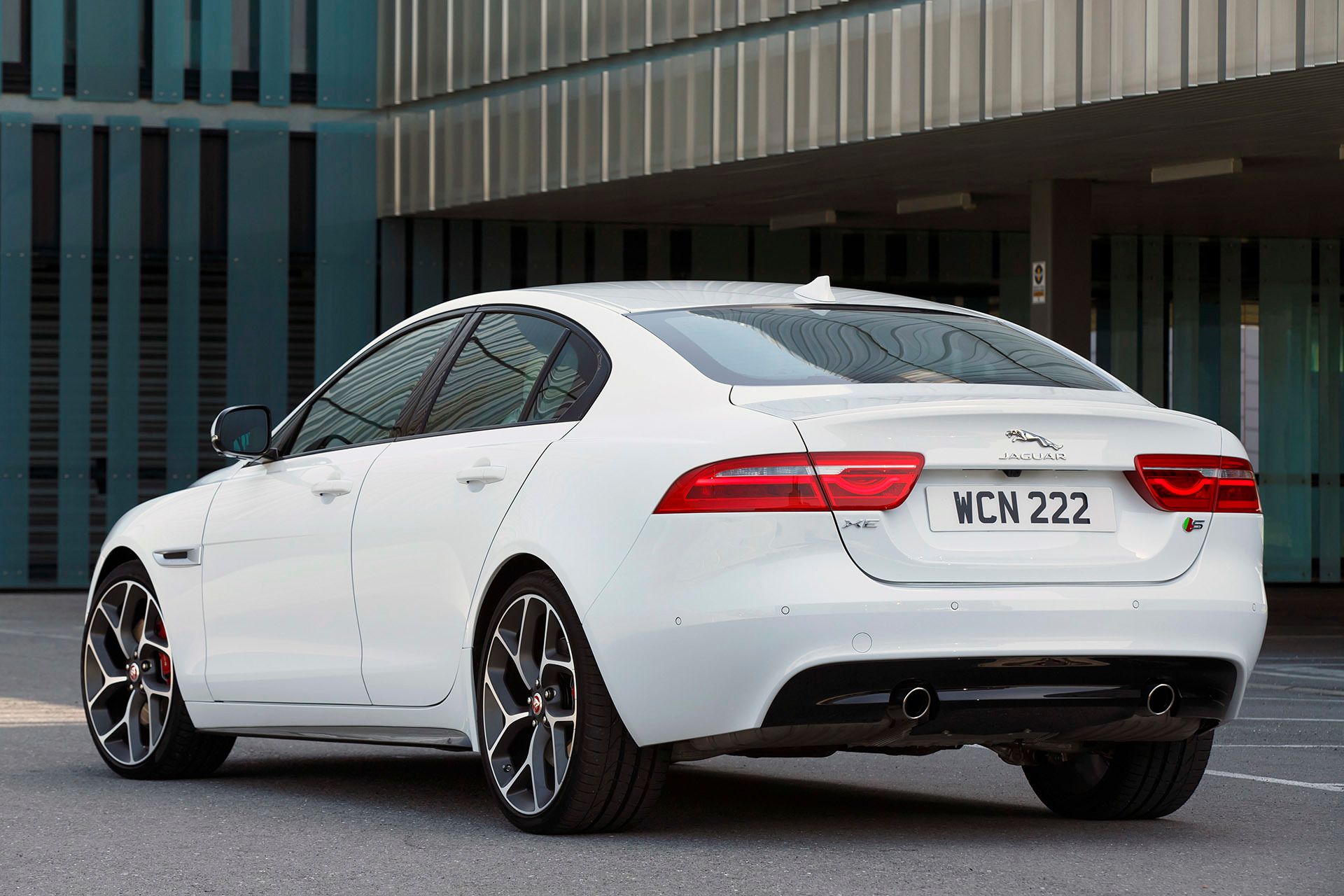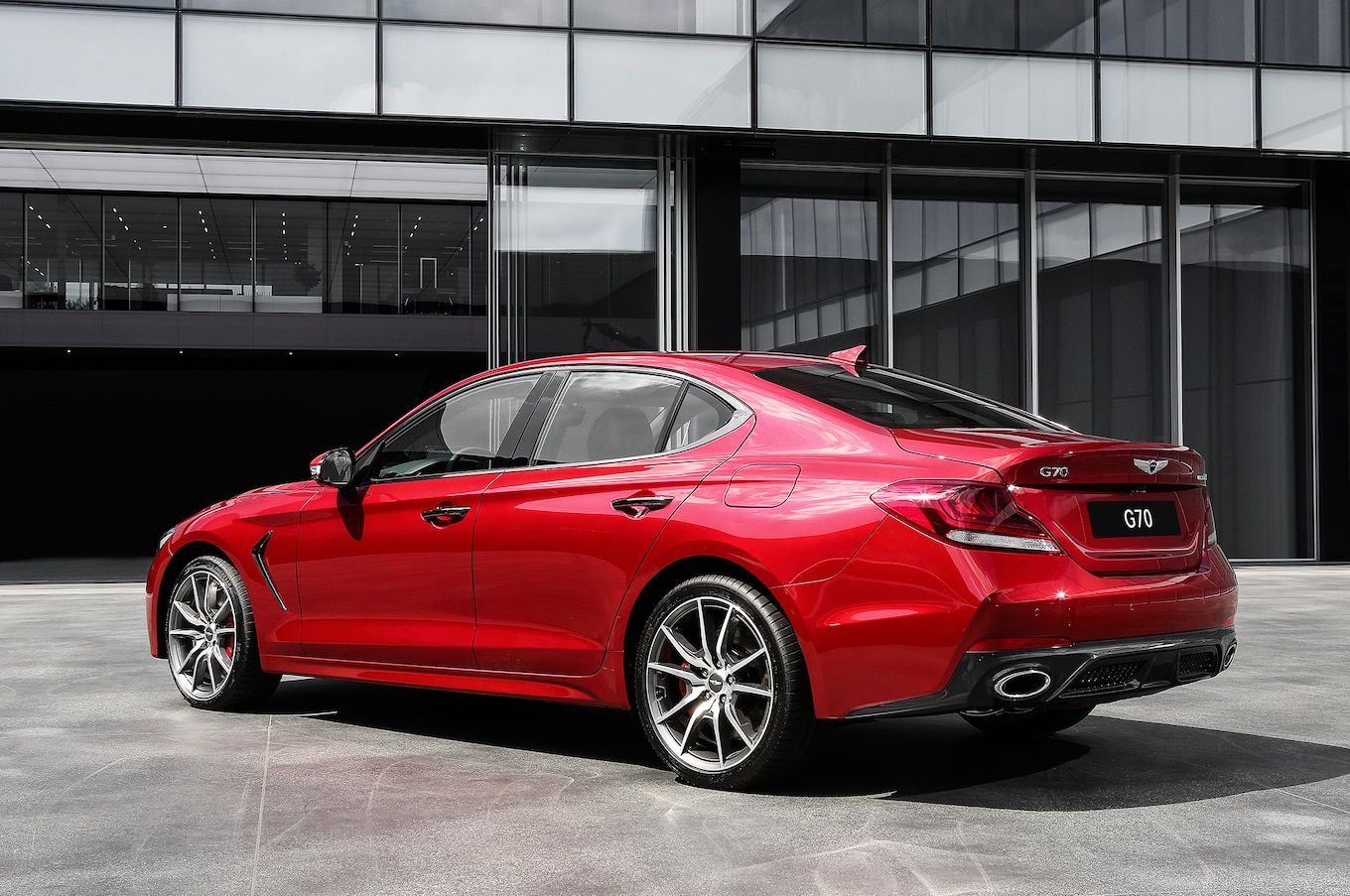According to Kelley Blue Book, the average cost of a new car sold in the United States is almost $41,000. That's quite a bit of money when put into context, for instance, you can find deals on lightly used exotic cars like an Alfa Romeo Giulia Quadrifoglio for less than a mid-range Ford F-150.
But let's be reasonable. Not everyone can afford the upkeep on an exotic car, nor live with its compromises. What, then, can be found for less than the cost of the average new car, that doesn't sacrifice daily-driver livability while still providing a driving experience that won't have you longing for a sports car?
The simple answer would be to suggest something German, but those cars are too easy to point to. I like a challenge. What are some alternatives to the usual entry-level BMW, Audi or Mercedes sedans, and are they any good?
The Lexus IS, Genesis G70 and Jaguar XE would all like to think so. Each one hails from a different part of the globe, and each is designed with different philosophies around the idea of a responsive, enjoyable entry-level luxury sedan.
Crucially, all of them can be found lightly-used for well below the $41,000 mark. But which one should you buy? Let's find out:
Mechanicals, Specs, and Design
On styling alone, the Jaguar XE wins by some margin. Beauty is subjective, but the Jag is classically-proportioned and handsome beyond its class. It does look a bit like a shrunken XF, but Jaguar's designers tightened up the proportions and made a gorgeous-looking thing out of it.
Mechanically, the XE came with two 2.0l turbo inline-4s, one powered by diesel and the other by gasoline, or a 3.0l supercharged V6 in the "35t" trim (XE S in other markets), borrowed from the F-Type coupe. That's the engine you want, and the one we'll be comparing to the other cars. The 3.0l makes 340 horsepower in MY2017 cars and 380 in MY2018-19 cars. The only transmission available is a ZF 8-speed automatic and you could have either RWD or AWD (the latter was the only option in Canada).
The Genesis G70 is getting a massive refresh for 2021, including a redesign of its front end to better match the brand's emerging new design language, but the older G70 is the model we'll be comparing here. On looks, like the Jag it's a handsome car, but the G70's design is a little fussy. Too many accent features, and a hint of generic familiarity to it. There are only so many ways to design a good-looking car while still making it distinct, and Genesis could certainly have done far worse, but early G70s do suffer a bit of identity crisis.
Under the hood, the G70 was offered with a 2.0l inline-4 and a 3.3l twin-turbo V6, which is the engine we'll be comparing. The 3.3l was a fairly common motor across the Hyundai/Kia/Genesis lineup, and in the G70 it was tuned to put out 365 horsepower. You could spec a class-exclusive manual transmission in this car, but only with the 2.0l I4. Upgrading to the V6 forced you to have an in-house 8-speed automatic unit. RWD and AWD were both available, though it's a similar story to the Jag if you're shopping in Canada.
Finally, the Lexus, pictured here at its best angle. The infamous "spindle" grille design is a point of contention with this car, though to my eyes it's nothing like as bad as Lexus SUV design. Still, the rear three-quarter is its most striking angle, with a strong shoulder line and that signature line connecting the rocker panel to the bottom of the tail light, cutting through the rear wheel. It's not to everyone's tastes, but it's hard to call this an ugly car.
The Lexus is least exciting when comparing mechanicals and specs. There is no turbocharging or supercharging here, just different sizes of naturally-aspirated V6s. Entry-level IS 250 models had 2.5l V6s making only 200 horsepower, but the top-trim IS 350s had much bigger 3.5l V6 engines, tuned for 306 horsepower. It sent that power to all four wheels through a 6-speed automatic, exclusively.
Overall, the Jaguar's engine and transmission combo is the most enticing. In reviews, it makes the best noise, pulls the strongest and on paper makes the most power. The Genesis is an interesting new player, and that 3.3l engine is far smoother than you might expect. The Lexus, while down on power, has a N/A engine character absent in the other cars, not to mention notoriously strong reliability.
Features And Tech
Interior tech has long been a sore point with Lexus. The IS has an excellent audio system, and the material choice is famously good (not to mention rock-solid build quality), but the layout of some of the controls leaves something to be desired. It's a bit of a button-fest, and the touchpad-controlled infotainment screen can be a pain to operate. There's also no Android Auto or Apple Carplay available on the third-generation car, meaning you're stuck with Lexus' music and nav applications, for better or worse.
Jaguar's compact sedan has come a long way since the Ford parts-sharing days that gave us the X-Type. Jaguar's interior design has been consistently good since then, and the XE is no exception. It's classy and restrained, and though its infotainment tech is already out of date (like the Lexus, no Android Auto or Apple Carplay here), its design looks better set to age with grace. A digital gauge cluster was optional, but the standard analog gauges are the ones to get if you want it to feel as much like an F-Type as it can.
The G70 may not have the sharpest transmission nor the most advanced construction materials, but it certainly has the most up-to-date cabin. Unlike the other two, it does have Android Auto and Apple Carplay, as well as a bigger gauge cluster screen (though there's no full-digital option). The interior design is very well laid-out for ergonomics and most controls are easy to find and physical. Materials are mostly good, though reviewers have pointed to some areas where Genesis could have paid more attention.
The Jag looks like the nicest place to spend time on a long journey, but the Genesis gives you more up-to-date toys to play with. The Lexus is once again a case of personal preference. Some people love the design, others don't, but it's the price to pay for the longevity that car will inevitably provide.
Driving Them And Buying Them
It shouldn't come as a surprise that the least powerful is also the least exciting to drive. The IS 350 isn't a sluggish car, but being unburdened with forced-induction means you have to work the engine and gearbox a little more to get the most out of it. It rewards you with sublime ride quality and a nice noise from the exhaust, but the transmission can be slow to downshift and the steering is the least communicative of the bunch, per reviews.
To buy, the Lexus is holding its value surprisingly well and despite the power deficit, most good used ones are hovering at or above $35,000 CAD. The good news is that you can expect Lexus reliability to get you much further between unplanned trips to the garage, and you can also take a bit of a risk with a higher-mileage used model if you're looking to save some more money.
The XE is a surprising and confusing machine, in that I am both surprised at how cheap these cars have become and confused by how seemingly anonymous this car is. It's just not a popular machine, which could explain why it's been cancelled for the 2021 model year. That's a shame, because these things are both beautiful to look at and listen to. They're sharp and responsive. The steering has good feel and the ride, which is adjustable, has enough compliance over harsh roads without tossing the car's weight around too much.
You can find "35t" XEs for well under the $41,000 target. There are a few listed for under $30,000 CAD right now, and even the nicest ones barely touch $40k. It should be noted that, in case it wasn't obvious, this is a JLR product and thus comes with a fair warning to look out for issues and to expect to spend a little more on maintenance than you would with something Japanese. Jag reliability has improved dramatically from the days of the V12 XJS, but parts and labour can both be more expensive than with most cars.
The Genesis G70 made a strong case for itself at launch. Journalists fawned over its driving experience, and it's easy to see why. Hyundai/Kia poached the former chief engineer from BMW's M division to work on its performance cars, and there are elements of the best German sports sedans in the G70's dynamics. It's not the lightest of the three, that crown goes to the Jag, but its twin-turbocharged V6 has a flat powerband that pulls consistently and confidently from low revs all the way to redline.
It doesn't make the nicest noise, and Hyundai/Kia's transmission tuning still isn't on par with the ZF units found nearly everywhere else in the auto industry, but as a first attempt at a competitive entry into the compact sports sedan segment, the Genesis G70 doesn't let itself down.
These are the newest vehicles of the lot too, with only MY2019-20 to choose from. This means there are fewer out there than the Lexus and Jag, but despite the scarcity the curse of luxury car depreciation has hit the G70 hard. You can find quite a few 3.3l models for under the $40,000 mark, and in a couple more years I wouldn't be surprised to find them under $30k.
It's hard to pick an overall winner in this comparison. The smartest choice is obviously the Lexus on account of its proven reliability, and for some people the Japanese approach to luxury appeals the strongest, but if you're willing to take a bit of a mechanical risk, both the Jaguar XE and Genesis G70 offer more exciting driving experiences with nicer designs and arguably better interiors and tech.
No matter which one you go for, at least it'll be more interesting than a 3-Series.

